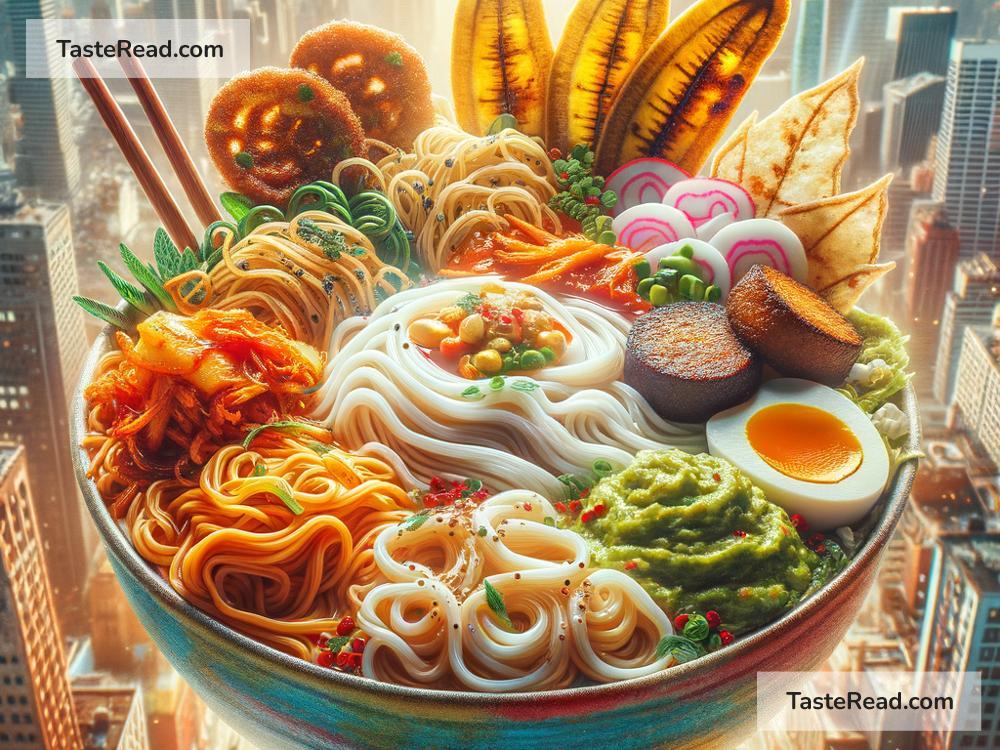Celebrating Cultural Crossovers in Street-Style Global Noodle Bowls in Global Cities
In every corner of the world, food has the incredible power to bring people together. As cities grow more diverse and cultures mix, street food becomes a playground for creativity. One dish that perfectly captures the magic of cultural exchange is the noodle bowl. From Tokyo to New York, Lagos to London, global cities are celebrating noodle bowls that combine flavors, ingredients, and traditions from across the world. These street-style noodle bowls are a delicious symbol of connection, innovation, and unity.
What Makes Noodle Bowls Special?
Noodle bowls are deeply rooted in many culinary traditions. They are filling, comforting, and endlessly versatile. Whether it’s ramen from Japan, pho from Vietnam, pasta from Italy, or noodles stir-fried in China, these dishes can be adapted in countless ways. Their simplicity makes them the perfect blank canvas for culinary experiments. By blending spices, sauces, and ingredients from different cuisines, chefs create exciting new versions of the classic noodle bowl that reflect the vibrant diversity of the cities they’re in.
Global Cities, Global Flavors
One of the best things about living in or visiting a global city is the food culture. Cities like London, New York, Singapore, and São Paulo have become melting pots of culinary ideas. With people from every corner of the world living side by side, street food stalls and restaurants often mirror this diversity. Street-style noodle bowls are a prime example of this cultural crossover, bringing together flavors, cooking techniques, and ingredients from various traditions.
Take New York, for instance. Imagine a noodle bowl inspired by Japanese ramen but featuring Mexican chipotle broth, topped with Italian basil and Korean kimchi. It’s an explosion of flavors from entirely different backgrounds, yet they harmonize perfectly. In cities like Bangkok, you might encounter Thai-style noodle bowls with a twist: thick udon noodles from Japan swimming in a spicy tom yum soup.
Singapore is another noodle paradise. Thanks to its multicultural roots, noodle bowls here reflect Chinese, Malay, Indian, and Peranakan influences. You might find laksa noodles infused with Middle Eastern tahini, or stir-fried with Italian olive oil and garlic. Each dish tells a story about where the chefs came from and the cultures that inspired them.
The Role of Street Food Culture
Street food vendors often play a unique role in exploring and sharing these innovative noodle bowl combinations. Unlike more formal restaurants, street food stalls are approachable, affordable, and allow chefs to experiment. There’s something casual and adventurous about ordering a noodle bowl from a street cart or small shop. It encourages diners to try something new.
Take the street food scene in Lagos, Nigeria. While traditional Nigerian dishes are dominant, street vendors have started offering noodle bowls incorporating local flavors like suya spice (a smoky grilled meat seasoning) alongside Asian-style noodles. These creations directly reflect the merging of local and global trends.
Similarly, in global hubs like Melbourne and Toronto, street vendors take inspiration from immigrant communities to craft noodle bowls that seamlessly blend traditions. For example, you might find a noodle bowl combining Malaysian satay sauce with Italian gnocchi-like textures or Indian tandoori vegetables with Chinese glass noodles.
Noodle Bowls: A Cultural Celebration
The beauty of noodle bowls lies in their ability to tell stories. Each dish is more than just food; it represents the lives and experiences of the people behind it. For example, a noodle bowl combining flavors from Japan and Ethiopia could be created by someone who grew up in Japan but was influenced by Ethiopian spice blends.
These dishes often reflect the journeys of immigrants bringing their cooking styles with them to new cities. They also embody the curiosity of local chefs who want to experiment with international flavors. As a result, noodle bowls become little bowls of cultural celebration where flavors unite, and boundaries blur.
How You Can Celebrate Cultural Crossovers in Noodle Bowls
Whether you make noodle bowls at home or enjoy them at a local eatery, there are plenty of ways to celebrate cultural crossovers in this dish. Here are some ideas:
-
Experiment at Home: Buy noodles from one culture and combine them with spices, herbs, or sauces from another. For example, cook Chinese noodles with Indian curry sauce or Italian pasta with Thai coconut milk.
-
Support Local Street Food Vendors: Find small, independent vendors who offer creative noodle bowls. Not only are you enjoying delicious food, but you’re also supporting small businesses and cultural exchange.
-
Learn About the Origins: Ask vendors or chefs about the inspiration behind their dishes. You might discover fascinating stories or connections between the ingredients used.
-
Share Your Creations: If you come up with your own noodle bowl recipe, share it with friends or on social media. Celebrating this kind of fusion cuisine helps spread positivity and appreciation for cultural diversity.
Final Thoughts
Street-style global noodle bowls are more than just a food trend—they’re a celebration of how connected our world has become. In bustling global cities, where cultures merge and traditions intertwine, these bowls showcase creativity, diversity, and unity. Each noodle bowl is a reminder that great things happen when we come together, share ideas, and embrace different perspectives.
The next time you dig into a noodle bowl, take a moment to appreciate the flavors, the craftsmanship, and the stories behind every ingredient. You’re not just eating a meal; you’re celebrating cultural crossovers in the most delicious way possible.


